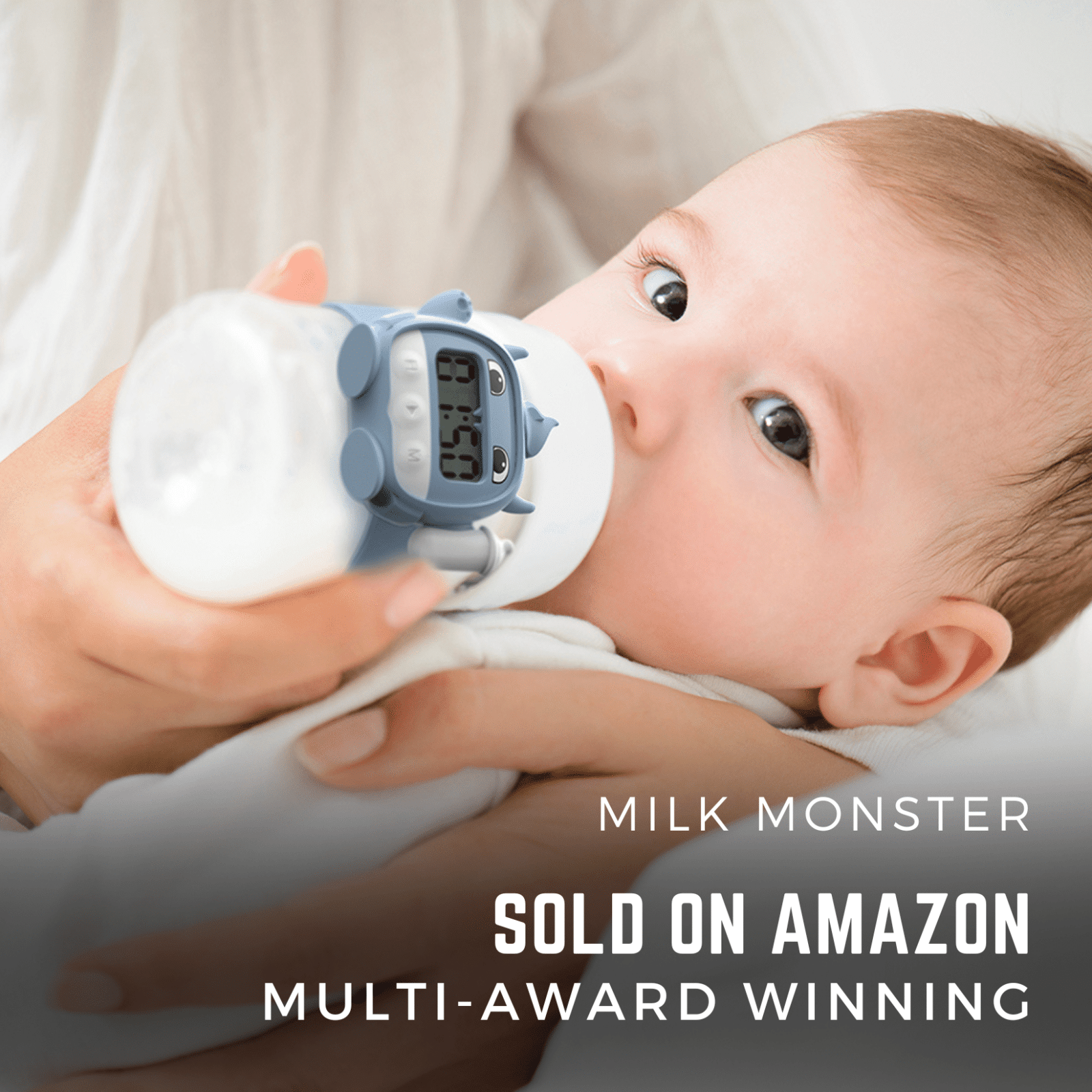Overview
Product branding and effective packaging design play a crucial role in the success of any business. It’s not just about creating a unique name and logo design, but it’s also about establishing a brand identity that resonates with the target audience. In this article, we’ll discuss the importance of product branding and packaging development and how it can impact customer perception and willingness to pay. We’ll also explore the concept of brand identity and how it can help businesses establish a strong market presence. Let’s dive in!
What is product branding?
Product branding is the process of creating and promoting a unique identity for a specific product or range of products. This involves developing a brand name, logo, and other visual and verbal elements that distinguish the product from its competitors and communicate its value proposition to the target market.
Product branding is different from corporate branding, which focuses on creating a brand identity and messaging for the parent company. Sometimes, a corporate company may own several brands, so the parent branding will often differ from the product branding. Alternatively, a product may be part of a series of products under the same brand, and the name of the product itself may be trademarked. These products can fall under the same house brand and style. For example, OXO’s overall brand has a product line called Good Grips.
The goal of product branding is to create a strong and recognisable brand identity that resonates with consumers and encourages them to choose your product over others. Effective product branding involves a deep understanding of your target audience and their needs, desires, and preferences. It also requires careful consideration of the positioning and messaging of your brand, including the emotional and practical benefits that your product provides. By developing a strong and consistent brand identity, you can create a sense of trust and familiarity with your customers and build a loyal following for your products.

Why should I consider product branding?
Product branding is crucial for carving out a unique identity in a crowded marketplace, making your product instantly recognisable and distinct from competitors. It goes beyond mere aesthetics, encapsulating the essence and values of what your product represents, thereby establishing a strong identity. Effective branding builds trust and loyalty among consumers, fostering an emotional connection that turns casual buyers into brand advocates. This trust is not only essential for customer retention but also justifies your product’s pricing strategy, as consumers are often willing to pay a premium for brands they perceive as high-quality or prestigious.
Moreover, robust product branding supports and enhances marketing efforts, making advertising campaigns more cohesive and impactful. It differentiates your product, highlighting unique features or values that resonate with your target audience, which is vital for standing out in a competitive landscape. An established brand can facilitate the introduction of new products, leveraging a loyal customer base more receptive to new offerings. Ultimately, strong branding increases the overall value of your business, making it a more attractive investment and cultivating a dedicated customer base that contributes to long-term success.
Product Branding Process
Step 1: Establish a recognisable brand identity

The first step in product branding is to define the brand identity. A clear brand identity is essential because it reflects the mission statement of the parent company and the values of the product or service. It’s important to establish what you want the brand to represent and how that should filter into the look of the logo, assets, packaging style, and graphics. By doing so, you can create a consistent brand message that resonates with the target audience and communicates the product’s unique value proposition.
To determine your brand values, think about the words and perceptions you want your customers to associate with your brand. Your brand values might include words like sustainability, fun, precision, or reliability. Your brand values should be an authentic reflection of your company’s culture, mission, and goals. By incorporating these values into your brand identity, you can build a strong connection with your target audience and create a loyal customer base.
The look of the logo, assets, packaging style, and graphics should also be carefully considered when defining the brand identity. The goal is to create a visually appealing design that communicates both the brand values and product’s unique benefits. The format of the packaging and material choices can also play a significant role in reinforcing the overall brand language and visual identity of a product. For example, a brand focused on sustainable materials for their product should continue that line of thinking in their packaging materials.
Step 2: Conduct Market Research
Market research plays a crucial role in understanding your target market, potential customers, and competitors. By conducting market research, you can gather valuable insights into the needs and preferences of your target audience, their buying behaviour, and the market trends. This information can help you make informed decisions about how to position and promote your product or service effectively.
There are various methods of conducting market research, including online surveys, focus groups, and interviews. Online surveys are an effective and cost-efficient way to collect data from a large sample size quickly. You can use online surveys to gather demographic information, opinions, and feedback from your target audience about your product or service.
Focus groups, on the other hand, are a more in-depth form of market research that involves a small group of people discussing the product or service in question. Through focus groups, you can collect qualitative data about the opinions, attitudes, and perceptions of your target audience.
In addition to gathering information about your target audience, market research can also provide valuable insights into your competitors. By analysing their strengths and weaknesses, you can identify areas where you can differentiate your product or service and stand out in the market.
Overall, conducting market research is a critical step in developing a successful product branding strategy. It can help you understand your target audience, refine your product or service, and develop a competitive advantage in the market.
Step 3: Develop Your Product Branding Strategy
When developing a product branding strategy, it’s important to consider what appeals to your target market. Market research and insights are a powerful tool to build a strategy that effectively communicates your product’s value proposition and resonates with your audience.
To develop an effective product branding strategy, its important to consider these points:
- What matters to your audience? It is key to identify the values that resonate with your target market and incorporate them into your branding strategy. This will help to establish an emotional connection between your product and your audience.
- How are you creating value? Consider how the benefits of your product create value for your target market. By emphasising how your product solves a specific need, you can create a brand that resonates with your customers.
- What makes you different? Closely review your competition and identify how your product can stand out and bring something new to the table. By highlighting your unique selling propositions, you can position your product in a way that sets it apart from competitors.
By developing a comprehensive product branding strategy, you build a plan to communicate your product’s value proposition and establish a strong brand identity that can connect effectively with your target audience.
Step 4: Create Your Visual Brand Elements

Visual brand elements help establish a strong and consistent brand identity. They are a tool to tie together different aspects of your brand, and can help create a memorable and recognisable impression of your brand. Elements such as logo design, colour scheme, and typography help harmonise the look and feel of your brand to create a specific personality.
Well executed visual brand elements give your brand a professional and trusted appearance. They are an important tool drive consistency when building additional brand touch-points.
Why is consistency important? Every touchpoint in the customer journey impacts their impression of your company and your product. This includes the use of consistent brand elements across all marketing channels, including your website, social media, and advertising materials. Consistency helps build brand recognition by reinforcing who you are through each touchpoint. When this is done well, it positively impacts the perceived value and trustworthiness of brand.
Icons and typography should be developed and selected to fit your brand’s tone and personality. By selecting visuals that feel in line with your brand qualities, you can create a visual identity that is both memorable and effective. This will help you can establish a lasting impression of your brand in the minds of your target audience.
Step 5: Create Brand Guidelines
Once you’ve established your brand strategy and determined your visual elements, you can build comprehensive brand guidelines (also known as a style guide) to outline standards for using your brand assets. This is a tool to ensure consistency across all platforms. Brand guidelines are crucial in maintaining a consistent and recognisable brand identity. They serve as a reference for your key brand elements, including fonts, colours, icons, tone of voice, photography style, and more.
What to Consider
Brand Messaging and Values: It’s crucial to state your brand’s values and mission statement from the outset, as they drive what the document is trying to represent.
Logo Treatment: This section should cover the different versions of the logo and how they should be used. It should also outline what type of logo treatment is acceptable or not acceptable.
Brand Colours: This section should discuss the main colours and secondary colours of your brand, choosing Pantone references, and ensuring that you don’t use too many colours.
Typography: This section should cover choosing a font face for both the logo, headlines, and supporting text. These may be the same font family or different fonts that work together in harmony. It should also include text treatment for different use cases.
Icons and Graphics: This section should cover illustrative elements that may explain product features or communication points on marketing. The icons and graphics should visually complement the overall style of the logo, type, and brand story.
By creating comprehensive brand guidelines, you are creating a powerful tool to maintain a consistent and recognisable brand identity that resonates with your target audience. Developing guidelines for your key brand elements will help ensure that your brand is effectively communicated across all touch-points.
Step 6: Design Your Product Packaging

Product packaging serves as a physical extension of your product branding and a key touchpoint with customers. Product packaging is an important aspect of product branding, as it not only protects the product but also communicates its benefits and brand values to the consumer.
Your packaging is important as it’s often the first interaction someone has with your product and brand. It’s the first impression and your chance to communicate why this product you developed is great and what your brand is about.
When you are developing your product packaging, consider the following:
Communication: It’s important to ensure that your product packaging communicates clearly and effectively what your product is or does, and what its key benefits are. Try to avoid making it too busy, which can be distracting and make it difficult for potential customers to understand the product benefits quickly. You must balance communicating what is needed while keeping the packaging visually appealing.
Brand: Your packaging design should resonate with your brand story. This can be achieved through the use of graphics, packaging structure, and material choice. Make sure that your packaging is consistent with your brand values and personality, and that it creates the right impression of your product.
Structure: It’s essential to ensure that your packaging design is structurally sound and can withstand shipping without getting damaged or looking worn out. A package that arrives at its destination looking bent or torn can give a bad impression, and if the product inside is broken, it can create even bigger problems. Make sure that your packaging design can both protect the product and look fresh by the time it reaches your customer.
A well-executed packaging design can be crucial to the success of a product, particularly if you are competing in an on-shelf retail environment. Make sure your first impression is a good one, that your packaging design aligns with your brand’s unique qualities and effectively communicates your product’s value proposition.
Step 7: Implement Branding Across All Touch-points
Consistency is key when it comes to branding. It’s not only important to have a consistent brand message, but also to ensure that message is conveyed across all platforms and touch-points. This includes not only the product itself, but also your online presence, packaging, advertising, and customer service.
One of the best tools to drive consistency is your brand guidelines. Use this guide to ensure that your branding is consistent across all touch-points. This will help your customers recognise your brand no matter where they encounter it, and establish trust and familiarity with your brand. By implementing your branding consistently, you can strengthen your brand identity and increase brand loyalty.
Step 8: Prototype and Testing your Packaging solution

The packaging of a product plays a crucial role in the overall perception of the brand and can make a significant impact on the purchasing decision of the consumer. It is therefore imperative to design an effective packaging solution that not only appeals to the customer but also reflects the brand’s values and identity. In this step, we will discuss the significance of prototyping and testing the packaging solution.
Prototyping is the process of creating a preliminary model of the packaging design to assess its functionality, size, and overall design. A prototype can help identify potential issues with the design and enable you to make necessary changes before launching the final product. It can also help you save time and money in the long run by ensuring that the packaging design meets the desired specifications.
Testing the packaging before launch is equally essential. It is crucial to test the packaging for its structure, effectiveness, and clarity. The packaging should be constructed in a manner that it is sturdy enough to protect the product during transportation and storage. It should also be designed in a way that it is easy to use and open for the customer. The packaging should effectively communicate the brand message and appeal to the target audience.
Using a focus group to test the packaging can be an effective way to get feedback from the target audience. You can ask the group to provide their thoughts on the packaging design, whether it appeals to them, and if they would be willing to purchase the product based on the packaging.
To sum-up, prototyping and testing are crucial steps in the packaging design process. By creating a prototype, you can identify potential design issues and save time and money in the long run. Testing the packaging before launch can ensure that it meets all necessary requirements and standards and effectively communicates the brand message to the target audience. By following these steps, you can create an effective packaging solution that reflects your brand values and identity and appeals to your customers.
Step 9: Launch and Gather Feedback
Launching your product with a clear branding strategy is essential to ensure that your target audience understands and connects with your brand. A well-executed branding strategy creates a consistent experience for your customers, builds trust and loyalty, and ultimately drives sales. In this step, we will discuss the importance of launching your product with a clear branding strategy and the role of customer feedback in refining your approach.
Once you have finalised your packaging design and branding strategy, it’s time to launch your product. The launch phase is an exciting time, but it’s important to ensure that your branding message is consistent across all channels, including your website, social media, and packaging.
Gathering feedback from customers is an essential part of refining your branding approach. Feedback can come in many forms, including customer reviews, surveys, and social media engagement. Pay close attention to customer feedback, including both positive and negative feedback, as this can help you understand how your customers perceive your brand, what is working well, and areas for improvement.
It’s also important to remember that your packaging and brand can evolve over time. Once you launch, you can perform wider market research and see where your message can be refined. This may include making adjustments to your packaging design or messaging to better resonate with your target audience.
In conclusion, launching your product with a clear branding strategy is crucial to the success of your business. Gathering feedback from customers is an important part of refining your approach and ensuring that your branding message resonates with your target audience. Remember that your packaging and brand can evolve over time, so be open to making necessary adjustments to ensure that your brand remains relevant and effective.





Corporate branding vs. product branding
Product branding and corporate branding are two distinct strategies within the broader realm of brand management, each serving a unique purpose and targeting different aspects of a business’s identity and market presence.
Product branding focuses on the identity and perception of individual products or services. It’s about creating a memorable experience around specific offerings, emphasising their unique benefits, features, and value propositions to stand out in the marketplace. Product branding aims to connect with consumers on an emotional level, encouraging loyalty to the product itself, regardless of the company behind it. This approach is crucial for businesses with diverse product lines or those operating in highly competitive markets, where differentiation is key to capturing consumer interest and driving sales.
Corporate branding, on the other hand, is concerned with the overall image and reputation of the company as a whole. It encapsulates the company’s values, culture, and mission, aiming to build trust and credibility with stakeholders, including customers, employees, investors, and partners. Corporate branding transcends individual products or services, focusing on creating a strong, consistent brand identity that represents reliability and quality across all interactions with the brand. This strategy is vital for building long-term relationships, attracting top talent, and fostering loyalty and advocacy among customers and other stakeholders.
While product branding can drive immediate sales and customer attachment to specific offerings, corporate branding builds the foundational trust and reputation that support a company’s long-term growth and success. Both strategies are complementary, with effective product branding enhancing corporate reputation and strong corporate branding providing a supportive umbrella under which individual products can thrive.

Avi-Bear
Avibear is a brand that offers innovative burp cloths made of high-quality materials. The founders used to create a logo that reflected its values of trustworthiness, quality, and warmth, while also incorporating a bear icon that would tie in with the product name.
To begin the logo design process, the team aligned on the brand values and the client’s aesthetic preferences. They created a mood board that captured the design direction and the emotions the logo should evoke.
Through a process of concept ideation and refinement, the team explored various combinations of font faces and iconography. Eventually, they settled on a font that correctly balanced the warm and trust they were looking to evoke. This type face had a storybook style, connecting it to nostalgia and comfort, while also tying the design to children’s products.
The shape around the type face was designed to mimic the shape of the product. The bear icon peers over this shape to reflect the tagline, “for the little one on your shoulder.” The logo’s overall look was minimalistic, warm, and friendly, conveying the brand values while also connecting to the product’s features.
The logo was well-received and aligned with the brand’s goals of trustworthiness and quality. It has been used on packaging and promotional material, receiving positive feedback from retailers throughout the UK. Considering the entire connection between packaging, product, and the story of the brand, the team created a logo that reflects Avi bear’s values and resonates with its target audience.
How D2M can help with Product Branding

Our company adopts a minimum viable approach to branding, focusing on crafting a recognisable and appealing brand identity that effectively supports the product’s value proposition without the unnecessary complexities often introduced by large branding agencies. This streamlined strategy emphasises the core elements that enhance brand recognition and consumer trust, directly contributing to justifying the product’s price tag. By eliminating the “fluff,” we ensure that every aspect of our branding is purposeful and directly aligned with our product’s unique selling points. This approach not only makes our branding efforts more efficient and cost-effective but also resonates well with our target audience, who appreciate clarity and authenticity in a brand’s presentation. Our goal is to establish a strong, memorable brand that stands out in the market for its simplicity and effectiveness, supporting our product’s success and customer satisfaction.

Product Branding FAQs
How important is product branding in innovation?
Product branding is crucial in innovation as it helps to differentiate your product from competitors and communicate its unique value proposition. Strong branding can improve consumer recognition, loyalty, and trust, ultimately driving sales and revenue.
What are some good product branding examples
Some good corporate branding examples include Coca-Cola, Nike and Apple. These brands have established strong brand identities through consistent messaging, design, and customer experience.
How to brand a product?
To brand a product, you need to create a name, logo, and design that sets it apart from other products. You should also establish a brand voice and messaging that aligns with your target audience and the product’s value proposition.
Should my product brand differ from my company brand?
It depends on the type of product and the company’s overall brand strategy. In some cases, it makes sense for the product brand to be distinct from the company brand, especially if the product is targeted at a different audience or has a unique value proposition. In other cases, the product brand may align with the company brand to reinforce its overall message and values.
How can I get market feedback?
You can gather market feedback through surveys, focus groups, customer interviews, social media listening, and website analytics. These methods can help you understand your target audience’s preferences, pain points, and needs, which can inform your product branding and marketing strategy.
Conclusion
In an era where brand differentiation and customer engagement are paramount, understanding the ins and outs of product branding and packaging design is more crucial than ever. These elements are not just about aesthetics; they form the core of your business’s identity and consumer perception. From establishing a compelling brand identity that resonates with your target audience to implementing a consistent branding strategy across all touchpoints, every step you take solidifies your market position and enhances consumer trust.
As you venture into the market, remember that your brand is a living entity that evolves with your audience’s needs and preferences, and continuous feedback and adaptation are key to sustained success. Through meticulous planning, creative execution, and strategic consistency, you can turn your product into a beloved brand that stands the test of time. Finally, bear in mind that your brand may end up way more valuable than the product that you first launch.


